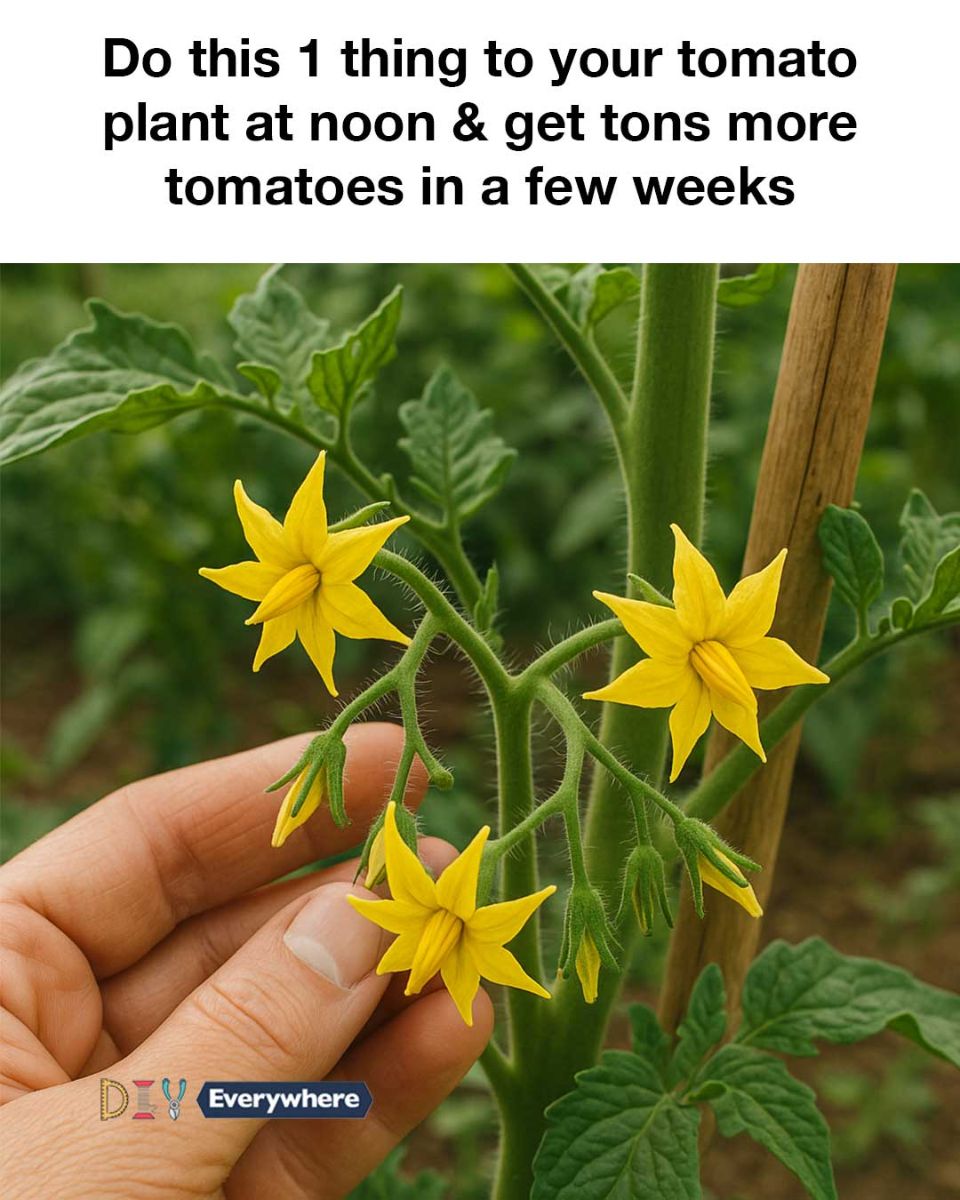Do this 1 thing to your tomato plant at noon & get tons more tomatoes in a few weeks
Georgia Lynn
Contributing Writer
Tomatoes are a staple in gardens around the world, cherished for their versatility and rich flavor. Whether you’re a seasoned gardener or a novice, the quest for a bountiful tomato harvest is universal. While many factors contribute to a successful yield, there’s one simple technique that can significantly boost your tomato production.
In this article, we’ll explore a unique method that involves a little midday activity with your tomato plants. Known as ‘buzzing,’ this technique can lead to a noticeable increase in your tomato yield within just a few weeks. Read on to discover how this simple practice can transform your garden.
1. The Noon Buzzing Technique: What It Is
The noon buzzing technique involves gently vibrating the flowers of your tomato plants to simulate the natural pollination process. This can be done using an electric toothbrush or a similar device that produces a gentle vibration. The goal is to mimic the buzzing of bees, which naturally helps in the pollination of tomato flowers.
By applying this technique, you encourage the pollen to move from the male part of the flower (anther) to the female part (stigma), thereby increasing the chances of fruit set. This method is particularly useful in greenhouses or indoor gardens where natural pollinators may be scarce.
2. Why Noon Is the Perfect Time for Buzzing
Noon is considered the ideal time for buzzing because this is when the flowers are fully open and the pollen is most viable. During the midday hours, the temperature and humidity levels are optimal for pollen transfer. The warmth of the sun helps to dry out the pollen, making it easier to dislodge and transfer.
Additionally, buzzing at noon ensures that the flowers have had ample time to open fully, maximizing the surface area for effective pollination. This timing aligns with the natural activity patterns of pollinators, making it the most effective period for manual intervention.
3. How Buzzing Stimulates Pollination
Buzzing stimulates pollination by mimicking the natural vibrations caused by bees. When a bee lands on a flower, its buzzing causes the flower to vibrate, releasing pollen from the anthers. This pollen then lands on the stigma, leading to fertilization.
By using a vibrating tool, you can replicate this process, ensuring that even in the absence of bees, your tomato plants receive the necessary stimulation for pollination. This technique is especially beneficial in controlled environments where natural pollinators are not present.
4. Tools You Need for Effective Buzzing
To effectively buzz your tomato plants, you’ll need a small, handheld vibrating device. An electric toothbrush is a popular choice due to its gentle vibration and ease of use. Alternatively, you can use a battery-operated pollination tool specifically designed for this purpose.
Ensure that the tool you choose has a soft tip to avoid damaging the delicate flowers. It’s also helpful to have a small brush or cotton swab on hand to assist in manually transferring pollen if needed.
5. Step-by-Step Guide to Buzzing Your Tomato Plants
1. Choose the right time: Aim to buzz your tomato plants around noon when the flowers are fully open.
2. Select the right tool: Use an electric toothbrush or a similar vibrating device.
3. Gently touch the back of each flower with the vibrating tool, holding it in place for a few seconds.
4. Repeat the process for each flower cluster, ensuring that all flowers receive attention.
5. Optionally, use a small brush to manually transfer pollen if necessary.
By following these steps, you can effectively enhance the pollination process and increase your tomato yield.
6. The Science Behind Increased Tomato Yield
The science behind buzzing lies in its ability to enhance the natural pollination process. Tomatoes are self-pollinating, meaning they have both male and female reproductive organs within the same flower. However, external factors like wind or insects are often needed to facilitate pollen transfer.
Buzzing provides the necessary mechanical stimulation to release pollen, ensuring that it reaches the stigma. This leads to a higher rate of fertilization and, consequently, more fruit production. Studies have shown that manual pollination techniques like buzzing can significantly increase the yield of tomato plants, particularly in environments lacking natural pollinators.
7. Complementary Practices: Pruning for Better Growth
In addition to buzzing, pruning is an essential practice for promoting healthy tomato growth. By removing excess foliage and suckers, you allow the plant to focus its energy on fruit production rather than leaf growth.
Pruning also improves air circulation around the plant, reducing the risk of fungal diseases. Aim to prune your tomato plants regularly, removing any yellowing leaves or unnecessary branches to encourage a robust and productive plant.
8. Ensuring Optimal Sunlight Exposure

